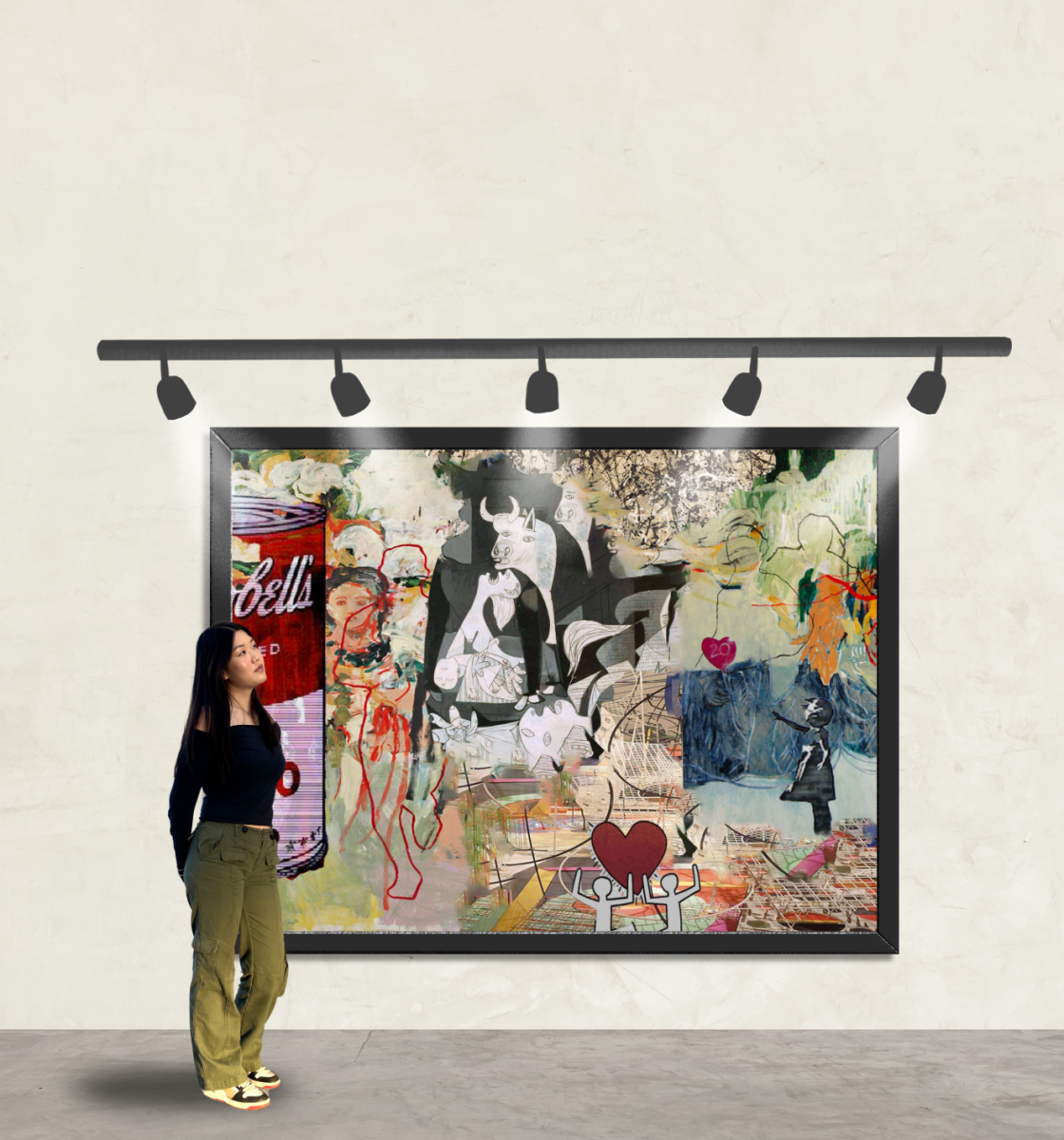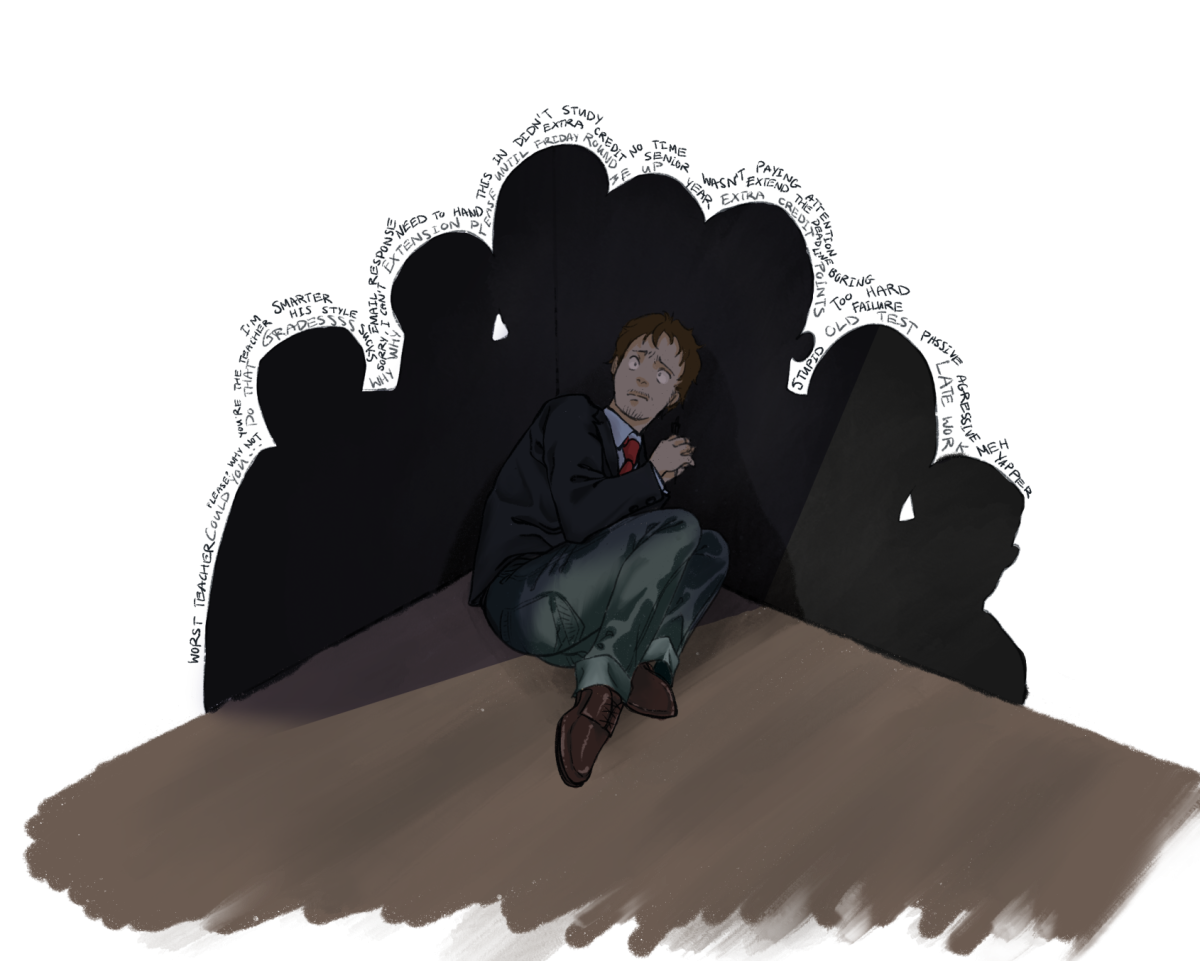A 5-by-4-foot solid white painting, with three diagonal white lines running across the middle, is the centerpiece of Yasmina Reza’s 1994 play “Art.” This play seeks to answer whether contemporary art, a new and controversial form of expression following the modern art period of the 20th century, should still be considered art, laying the groundwork for decades of discussions. Although some may argue that its deviance from order and reason warrants its dismissal, contemporary art is still real art, as it encapsulates the mindset of the 21st century and evokes emotion, thought and conversation.
Art serves as a testimony to its era, capturing challenges, sociocultural influences and political climates. In the 1800s, Romanticism — focusing on imagination, nature and emotion — mirrored disillusionment with Enlightenment rationality, which emphasized knowledge and reason. Early 1920s Dadaism, through satirical and illogical art, provoked the middle class through challenging war and materialism post-World War I.
Like Romanticism and Dadaism, contemporary art — works by artists living today — marks the feelings and priorities of this era. Its experimental style reflects today’s drive for creativity. While past artists focused on religion and mythology with realism and skill, today’s artists highlight individualism, the body, technology and globalization. Contemporary art is significant because it transforms today’s conflicts and questions into artwork.
Critics argue that contemporary art’s inclination toward minimalism or use of unusual mediums and materials diminishes its artistic value. If anyone can replicate the simplistic strokes of a contemporary painting, it is not respectable, fine art. Moreover, according to art critic Avelina Lésper, contemporary art operates on a flawed belief: that simply classifying something dull and orthodox as art can transform it into such.
These arguments, however, overlook the fact that art evolves with society, bringing new perspectives and ideas. Thus, strict definitions of art, reminiscent of those from medieval and Neoclassicaleras, are outdated. In fact, this continual metamorphosis of expression is precisely what keeps art exciting and unexpected.
These changes in value systems don’t make creating art — or rather, recognizable, “good” art — easier. Creating art today poses an entirely different challenge, not one of skill or observation, but rather of originality and memorability. For contemporary artists, the struggle is to either do something nobody ever has before or do it better than everyone who has. If museum artworks were easily replaceable, they wouldn’t be exhibited. Those artworks reside on those walls of fame because they are sentimental, powerful and beautiful in a way other pieces cannot replicate.
Though there are extreme examples of this “out of the box” approach — such as Salvatore Garau’s “Lo Sono,” an invisible sculpture that sold for $18,000, or Maurizio Cattelan’s “Comedian,” which consists of a fresh banana duct taped to the wall — these extremes are not representative of contemporary art as a whole.
Furthermore, the integration of unremarkable everyday objects isn’t a lazy attempt at art but an effort to bridge the gap between audience and artist: to make the audience search for resonance and connection with their personal life. To judge art by the barometer of time spent, medium and style employed, and materials used is a futile task that misrepresents artists’ intentions.
The debate surrounding contemporary art attests to its authenticity. Art challenges and provokes thought. Our preference for predictability means shifts in art’s definition evoke concern, criticism and curiosity. Historically, reactions to new art forms tend to be negative, like the initial dismissal of Impressionism’s bold colors and strokes as “sloppy.” Over time, however, these movements gain recognition as influential styles.
While it is important to focus on the present and to participate in discussion, it is equally important to take the overwhelming criticism of contemporary art in the media with a grain of salt. At the end of the day, each person experiences art differently. Thus, contemporary art cannot simply be written off: It should be digested piece by piece because there will always be good art and bad art in every era. It is up to an individual to choose which pieces they will enjoy.





















